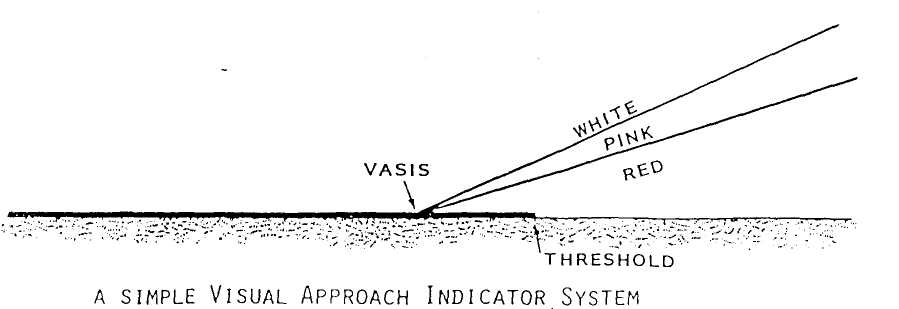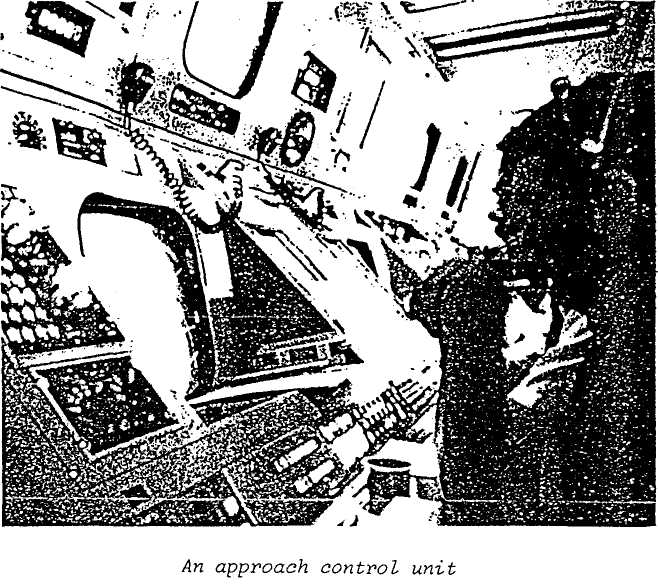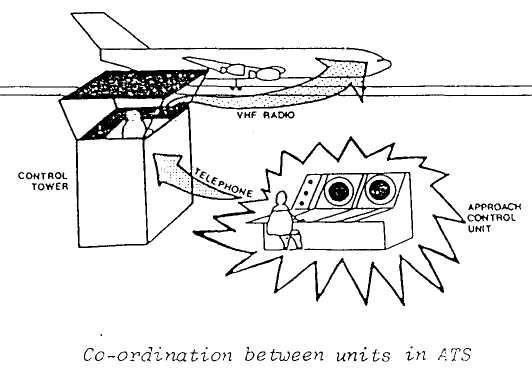
- •Text 1 naviagtion system – area navigation
- •Naviagtion system – vor/dme
- •Text 2 naviagtion system – satellite
- •Text 3 the effects of the weather on aviation
- •Text 4 the role of radar in atc
- •Text 5 naviagtion system – ins
- •Naviagtion system – ndb
- •Text 6 navigation system – landing aids
- •Text 8 primary radar
- •Text 9 radio navigation aids to final approach and landing ils
- •Text 13 area control service
- •Text 14 the control tower (Part 2)
- •Text 15
- •Text 16
- •Visual aids for navigation marking and lights
- •Text 18 some problems associated with radar (Part 2)
- •Text 19 aeronautical information service (Part 2)
- •Text 21 aims and objectives of icao
- •Text 23 ground and tower control
- •Text 24 holding
- •Text 25 global positioning system (part 1)
Text 16
Visual aids for navigation marking and lights
Additional visual aids to navigation consist of markings on the aerodromes. These markings comprise single lines or rows of lines which, for the pilot, are very important for holding positions, runway thresholds, the runway centre lines, the sides of the runways, etc.
However, at night or during poor visibility by day, lights are required. For lights to be effective they must be of adequate intensity. At certain aerodromes the controller can vary the intensity of some of the lights so that they can be reduced to avoid momentarily blinding the pilot and strong enough so that he can see them in the weather.
The first light a pilot sees on approach is generally the aerodrome beacon. It may rotate and can be seen at a great distance distinguishable by its coloured flashes alternating with white, or white only. There might be an identification beam which shows green flashes of light which identify the aerodrome in Morse code. Red lights, the usual danger signal, warn pilots of the obstacles such as hangers and other high buildings, telephone poles, etc. Runway edge lights identify the runway and approach lights assist the pilot to align himself with the runway.
Lights may also be used to provide a glide path similar to what an ILS provides electronically. The Visual Approach Slope Indicator System, better known as VASIS, is a beam of light having a white colour in its upper part and a red colour in its lower part. A pilot of an aeroplane during an approach will:
when above the approach slope, see the lights to be white in colour;
when on the approach slope, see the lights to be pink in colour; and
when below the approach slope, see the lights to be red in colour.
By reference to VASIS, combined with ILS, the pilot can bring an aircraft down safely almost to touchdown by day or night.

After landing, he follows the blue taxi lights along the taxiway to the apron, and the service areas.
At the service area a marshaller with illuminated wands directs the aircraft with signals to its proper position for unloading and, finally, signals pilot to cut his engines.
blinding [blaindiN]ослепление
distinguishable [distiNgwiSEbl]различимый
alternating [O:ltE7neitiN]перемежающийся, меняющийся
marshaller [7ma:SElE]дежурный (регулировщик)
wand [wO:nd]жезл (как у ГАИ)
TEXT 17
APPROACH CONTROL

 Approach
control can be situated at the aerodrome or at some other site.
Normally, if there are two aerodromes in the vicinity, there will be
one approach control unit to cover them both. Generally speaking, the
approach controller's main task is to provide separation to departing
and arriving aircraft operating under instrument flight rules. The
approach controller generally takes over the control of an arriving
aircraft from the airways controller and eventually hands over that
aircraft to the control tower. For departing aircraft the procedure
is reversed.
Approach
control can be situated at the aerodrome or at some other site.
Normally, if there are two aerodromes in the vicinity, there will be
one approach control unit to cover them both. Generally speaking, the
approach controller's main task is to provide separation to departing
and arriving aircraft operating under instrument flight rules. The
approach controller generally takes over the control of an arriving
aircraft from the airways controller and eventually hands over that
aircraft to the control tower. For departing aircraft the procedure
is reversed.
A considerable degree of co-ordination is therefore required between the various units in air traffic services.
The approach control unit has radio equipment similar to that in the control tower. This enables the controller to communicate with aircraft on several different radio frequencies. Most of the frequencies are in the VHF range with some in the UHF.
Aircraft operate under two different types of rules: IFR and VFR. If Visual Meteorological Conditions prevail, flight under
Visual Flight Rules (VFR) is permissible. In Instrument Meteorological Conditions, Instrument Flight Rules (IFR) are applied.
When airports are very busy the approach controller may have to stack the aircraft at different levels so that each may descend in turn towards the airport. In such cases the approach controller usually gives aircraft their expected approach time. Because of their high fuel consumption at low levels, jet aircraft and, particularly supersonic aircraft, prefer Co remain at higher altitudes before starting their descent.
VHF (UHF ultra high frequency) УВЧ (ультра высокая частота)
